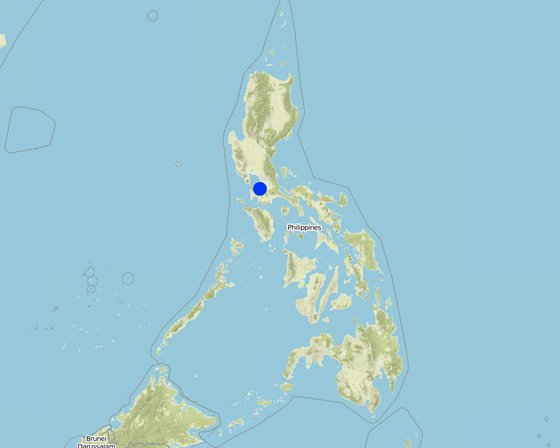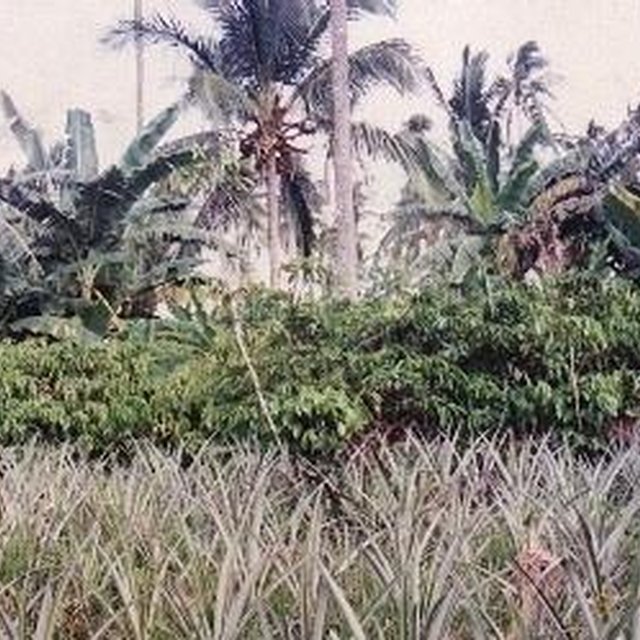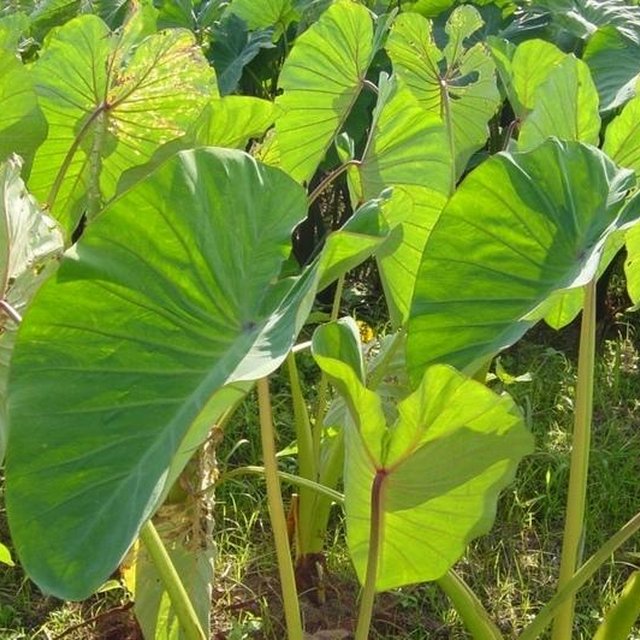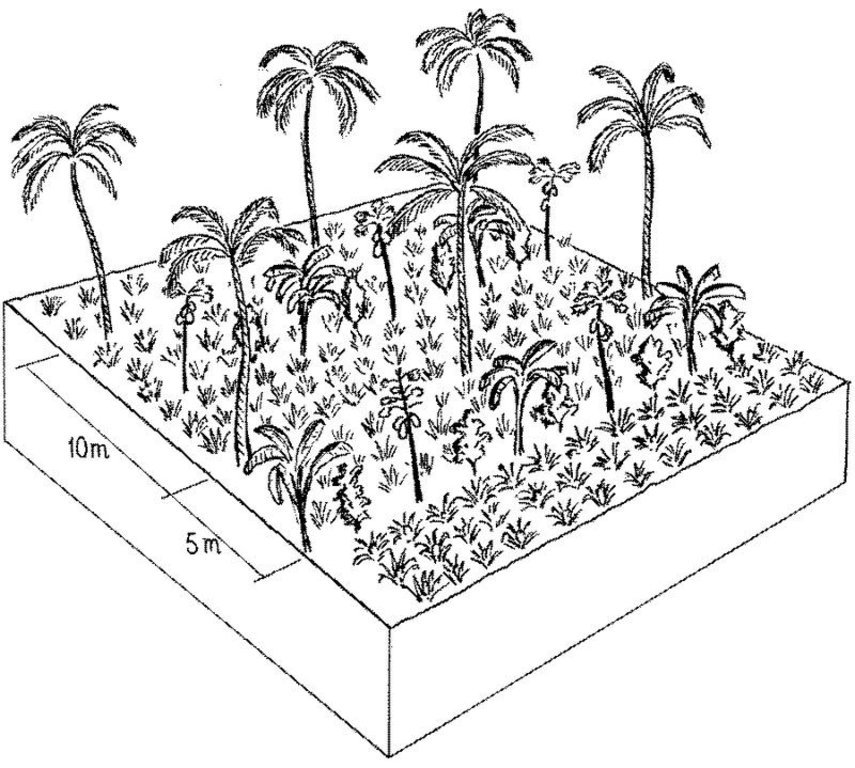



Under the maramihang pagtatanim multi-storey cropping system, perennial crops (coconut, banana, coffee, papaya, pineapple) and annuals/biennials (root crops: taro, yam, sweet potato etc) are interplanted to maximise productivity and income. This is most applicable where farms are small and the system needs to be intensive. In this particular area, Cavite, coconuts are usually planted first. When they reach a height of 4.5 meters (after 3-4 years), bananas, coffee and/or papaya are planted underneath. Black pepper may also be part of the system. After sufficient space has developed at ground level in about three to four years, root crops are planted. At full establishment, the system develops different layers: coconut (tallest) followed by banana, coffee, papaya (middle), root crops and pineapple (lowest). In recent years, because of its relatively low productivity and decreasing price, coconut has tended to be replaced in the system with higher value crops like the fruit tree santol (Sandoricum koetjape), papaya and sometimes black pepper. However most multi-storey farms adhere to no specific planting layout. The multi-storey agroforestry system is intended to make the best use of resources (soil, moisture and space) for increased farm income. It is also very effective against soil erosion. Previously, continuous monocropping of annual crops resulted in erosion and serious soil fertility decline. Even though the land is sloping and rainfall during the monsoon is extremely intensive, multi-storey cropping provides adequate soil cover throughout the year, protecting the land from erosion.
Fertilization, weeding and pruning are necessary elements of maintenance. ‘Natural’ mulching through fallen leaves from leguminous trees helps restore and maintain soil fertility The system is applied in a volcanic-derived soil with distinct wet and dry periods (6 months wet season, 6 months dry season). There is the risk of a destructive typhoon every 10 years. Farm income is relatively high, but labour and input costs are also high - and the technology is mostly used by relatively wealthy landowners. There is strong spontaneous adoption, as maramihang pagtatanim has been proven to be effective and remunerative. This technology has been practiced in Cavite since the 1970s. Implementation is by individual farmers with strong extension support from the Local Government Units (LGUs), NGOs and the Cavite State University.

Lieu: Cavite, Philippines, Cavite, Philippines
Nbr de sites de la Technologie analysés:
Diffusion de la Technologie: répartie uniformément sur une zone (40.0 km²)
Dans des zones protégées en permanence ?:
Date de mise en oeuvre: il y a plus de 50 ans (technologie traditionnelle)
Type d'introduction







| Spécifiez les intrants | Unité | Quantité | Coûts par unité (Peso) | Coût total par intrant (Peso) | % des coût supporté par les exploitants des terres |
| Main d'œuvre | |||||
| labour | ha | 1,0 | 150,0 | 150,0 | 100,0 |
| Equipements | |||||
| animal traction | ha | 1,0 | 50,0 | 50,0 | 100,0 |
| tools | ha | 1,0 | 40,0 | 40,0 | 100,0 |
| Matériel végétal | |||||
| seedlings | ha | 1,0 | 840,0 | 840,0 | 100,0 |
| Engrais et biocides | |||||
| fertilizer | ha | 1,0 | 160,0 | 160,0 | 100,0 |
| biocides | ha | 1,0 | 30,0 | 30,0 | 100,0 |
| compost/manure | ha | 1,0 | 120,0 | 120,0 | 100,0 |
| Coût total de mise en place de la Technologie | 1'390.0 | ||||
| Coût total de mise en place de la Technologie en dollars américains (USD) | 27.8 | ||||
| Spécifiez les intrants | Unité | Quantité | Coûts par unité (Peso) | Coût total par intrant (Peso) | % des coût supporté par les exploitants des terres |
| Main d'œuvre | |||||
| labour | ha | 1,0 | 300,0 | 300,0 | 100,0 |
| Engrais et biocides | |||||
| fertilizer | ha | 1,0 | 160,0 | 160,0 | 100,0 |
| biocides | ha | 1,0 | 30,0 | 30,0 | 100,0 |
| Coût total d'entretien de la Technologie | 490.0 | ||||
| Coût total d'entretien de la Technologie en dollars américains (USD) | 9.8 | ||||
due to high plant population (density)
Farmers in the area are coming the richest
during planting/harvesting
system is capital intensive
through the formation of cooperatives or farmers organisation
through the involvement of line agencies and strengthening of research component
almost 100 % soil cover
Quantité avant la GDT: 10
Quantité après la GDT: 0
reduced run-offf
organic matter accumulation
increase aquifer recharge
run-off is reduced
100 % protection of surface